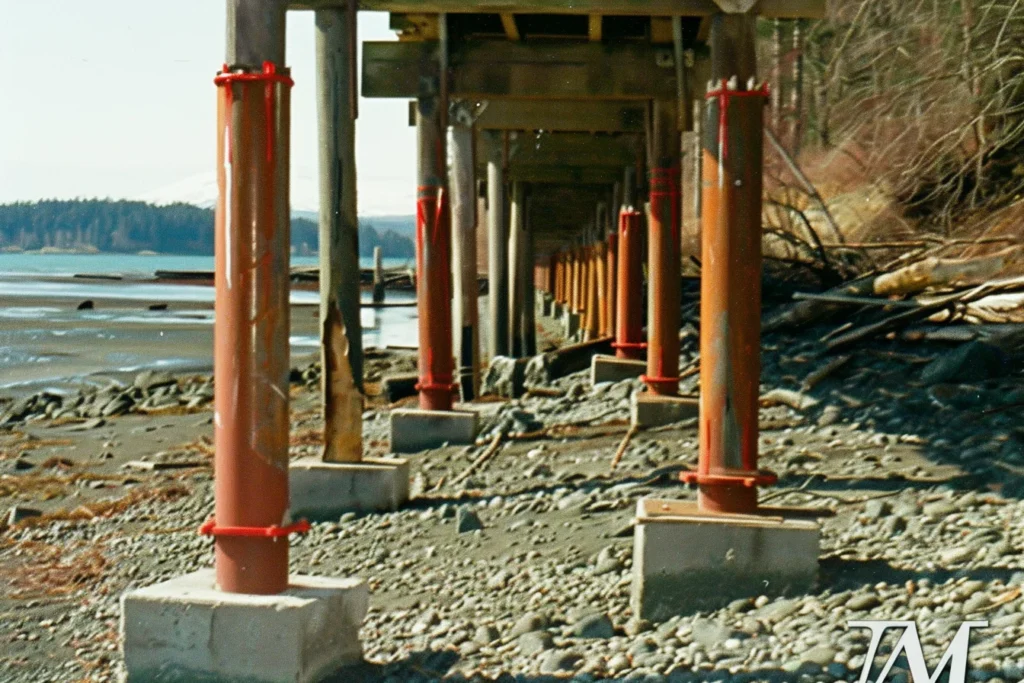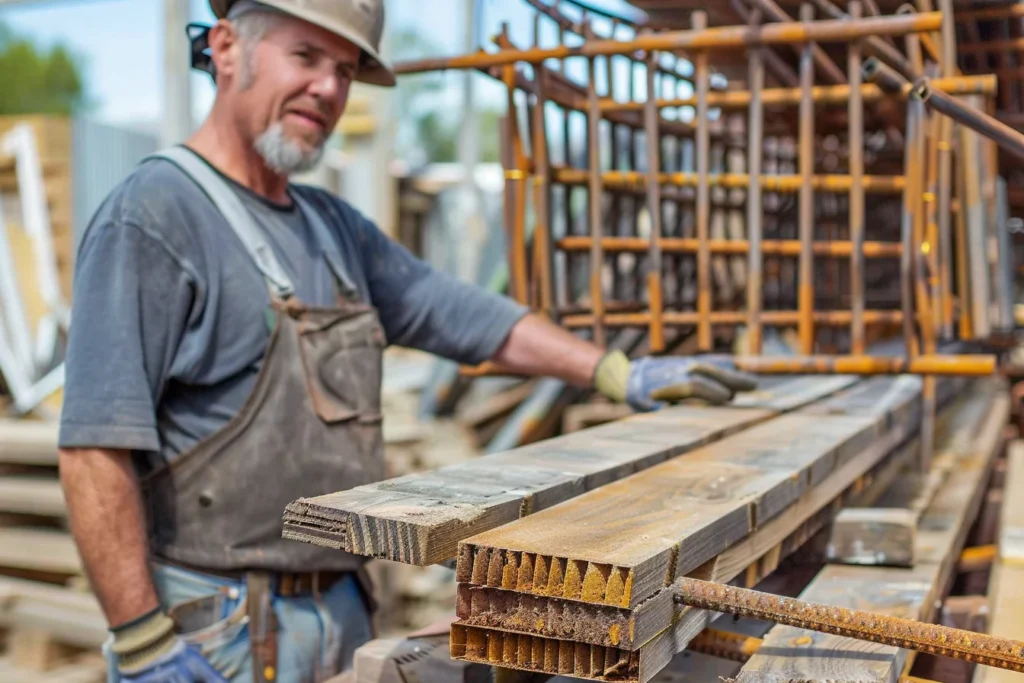Have you ever found yourself in the basement, looking up at those jack posts and wondering just how far apart they are supposed to be?
Is there some secret formula, some magic number that will ensure your basement does not turn into a subterranean funhouse? Well, buckle up because we’ve gone down the rabbit hole and now we’re going to spill the beans.
The Mysterious World of Jack Posts
First things first, what is a jack post? Picture your house settling over time, floors throwing themselves pity parties by sagging right smack dab in the middle of them.
Jack posts are like uninvited guests who prop up drooping floors thereby saving the day from turning your house into an amusement park.
The Great Spacing Debate
How far apart should these brave jack posts stand? If you’re thinking “one size fits all”, I’m sorry but it’s more like trying to recommend one shoe size for everyone at a party.
However, our investigations reveal insight that 767 square feet is a good place for each jack post.
But why this specific number? Definitely not picked out of thin air like a magician’s bunny. It is determined using load capacities and floor requirements. Here’s the trick, don’t feel left out of it!
The Bottom Line

Thus next time you are downstairs in your basement, consider spacing out those jack posts, keep in mind that it’s less about hard and fast rules but rather an understanding of the structure you are dealing with.
Always remember this. Sometimes, doing a little math, using some common sense, and adding a bit of humor can be helpful when improving your home.
The idea of putting in jack posts is enough to make your skin crawl, like thinking about spider dentistry or the rationale behind lower-rise jeans.
However, do not be terrified! It is actually less intimidating than it seems and yes, you can do this yourself if you have some free time that you want to spend being a handyman or handywoman or handyperson.
First thing first: Detection Work
Before you go around being a cowboy with tools, take a look at your house for clues. Which part of the floor feels as though it is sinking literally? Measure across the area in question.
Think of how much weight it bears (think of how many times your mother-in-law has walked over it), and how often people step on it.
This is important because that’s where those old weary floor joists which are crying out for reinforcement are going to need bolstering up. And that’s home care in advance. You’re like a superhero but one who fights for his/her house.
Now, roll up your sleeves. Let us get going:

- Instruction Manual Tango
Begin by cozying up to the manufacturer’s instructions. Although these probably will not be as captivating as gripping thrillers, they serve as reliable sources on all nuts and bolts concerning jack post installation.
- Putting Your Posts into Position
Place that jack post right under the spot on your floor where there’s sagging. The flat bit against the joist (steel plate) needs to be just that—flat.
This isn’t interpretive dancing, this isn’t abstract angles. Keep that post straighter than your values during an audit by tax authorities.
- Get Your Steel Plates Ready
Put those steel plates together and measure twice to fit once – this ain’t horseshoes or hand grenades – you gotta mind the gap here!
Jack up its size based on what amount of lean you’re seeing down below its seams. Don’t forget, these posts can be adjusted – just like those pants that you put on after Thanksgiving dinner.
- Turn the Handle as If Grinding Beans in a Hipster Coffee Shop
Lock everything down and start grinding away. Not enough to recreate your favorite horror movie, but until it feels snug.
After tightening everything up well, give the floor a test walk. No creaks? No groans? Congratulations, you’ve just advanced to the next level of Home Maintenance!
Overcoming The Jacking Up Blues

You have heard of jacking up right? It’s not only for cars or when your heart rate is elevated during a scary movie marathon. It is an essential strategy for dealing with major home horrors like sagging floors too.
But it needs delicate movements folks. Raise too high and your walls will crack up like when getting an adjustment from the wrong chiropractor.
1/8 inch at a time is what many professionals recommend as the maximum elevation. Slowly slowly catchy monkey. If you want a healthier floor then one tiny lift per time should do it all over again for you!
Do Jack Posts Dream of Concrete Footings?
Think about Jack posts as if they were flamingos. The idea that your piano should be supported by a flamingo seems absurd, right? Well, not unless it is standing on something solid.
That’s the footing. It will keep your basement from getting all wobbly like a fun house or something. Always make sure that the foot of your jack post is strong because no one needs to create a tower of Pisa in their living room.
Can One Trust Jack Posts Forever?
The short answer: No. The long answer: They’re like that college buddy who crashes on your couch for a week and stays for a month.
They are perfect when you need temporary support during renovations or emergencies, but they cannot substitute for permanent structural stability in your home. If you need more permanence, then it’s time to bid farewell to your metallic guest and go shopping for something better.
Holes in My Load-Bearing Columns

If you think about load-bearing columns like guests at a dinner party, this will help plan them effectively. These poles should be separated neither too close together nor too far apart lest the conversation (and roof) fall down after all.
Architectural wisdom says that spacing should be 2.5m-7.5m between the poles. This is considered an optimum gap since one can have a stable structure without feeling like being in a column forest.
RELATED: Walnut and Poplar Wood Compared (Furniture, Cabinets, and Flooring)
How Much Does It Cost To Keep Your Basement Up?
Thinking of adding some new posts for support to strengthen your basement? Then get ready for some posts coming up! In essence, this is like selecting good wine which could have varying prices depending upon the complexity and quality issues involved therein.
At its most basic level, installation might start at around $1,200 but if you have a high maintenance type basement, it might cost as much as $25k for full structural renovation. Remember good support comes at any price but not at no price.